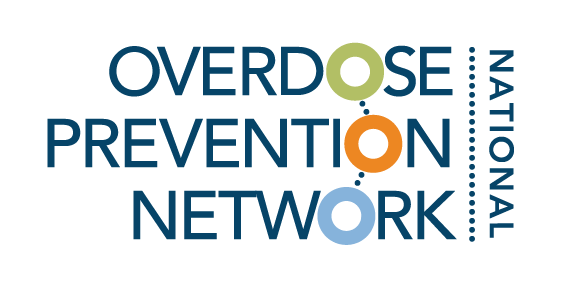
Resource Library
Toolkits, guides, and other resources vetted by experts in overdose prevention.
Filter by category and tags, or search by keyword (ex. COVID-19, harm reduction).
Fentanyl Test Strips (FTS) Disclaimer Example
This resource created by COAST Ventura County is in both English and Spanish and is an example of a disclaimer that can be used when distributing fentanyl test strips to the public. This disclaimer highlights that individuals using FTS should understand that the results may not be perfectly accurate, that the strips are a tool for lifesaving overdose prevention, and that distribution aligns with all legal compliance, etc. This example can be used for other communities and organizations looking to implement a similar disclaimer.
Nitrous Oxide Education Toolkit
Recently medical practitioners in Nevada County have seen an increase in patients being seen at the emergency department and other settings as a result of complications from recreational nitrous oxide use. These complications are often neurological, ranging from tingling in the extremities, loss of sensation and significant weakness to long-term neurological damage. Know Overdose Nevada County has made an educational toolkit to provide more information and treatment options.
Let’s Start Talking Booklet
the Let’s Talk and Let’s Start Talking booklets that OD Free Marin developed to support caregivers, parents, and families in discussing overdose prevention. It also offers information about the teen brain, how much they carry mentally, and how to can best support them.
Harm Reduction Vending Machines: Consideration for Implementation
Harm reduction vending machines help reduce overdose deaths and promote better health and wellness for people experiencing homelessness who have substance use disorders or co-occurring disorders. This fact sheet introduces the evidence-based harm reduction vending machine model, explains how it supports overdose prevention strategies, outlines what supplies to include, and highlights key considerations for implementation.
Santa Cruz County School-Based Interventions for Substance Use & Overdose Prevention Brief Overview
Santa Cruz County has long prioritized youth substance use prevention through collaborative efforts like Community Prevention Partners and SafeRx Santa Cruz County. In light of new state legislation affecting schools, this guide provides schools with practical strategies, curricula options, and concrete resources to not only move into compliance, but to optimally support students' overall well-being.
Implementing Harm Reduction Vending Machines
In the Works has developed a new E-Course on Implementing Harm Reduction Vending Machines. This course guides participants through the steps of planning and setting up a successful program, aimed at expanding access to harm reduction supplies and promoting community safety through the implementation of vending machines.
Emerging Trends Training Series Podcast
The Emerging Trends in Addiction Medicine Podcast series features the learnings of hospitals taking part in the CA Bridge Centers of Excellence project. In addition to sharing best practices for low-threshold access to buprenorphine treatment for opioid use disorder, this series will explore emerging treatment pathways for stimulant use disorder and post-overdose care. The series will also share learnings from the Centers of Excellence hospitals’ response to the increased supply of fentanyl in California so that all hospitals are able to address the overdose crisis with evidence-based care.
Drug Policy Alliance
Overdose deaths in the United States dropped by nearly 17% between July 2023 and July 2024. However, over 93,000 people died of drug overdose in that period, more than the number of people who died from vehicle-caused accidents or firearms combined. This remains an urgent public health issue that requires evidence-based solutions. Public health interventions saved lives and must be expanded. Effective interventions include: the overdose prevention drug naloxone, expanded harm reduction services such as fentanyl test strips, increased access to medications for opioid use disorder (MOUD), and drug education based in facts, not fear.
Support Harm Reduction Programs in the LA Region: Organizations requesting support and funds
Our partners at the National Harm Reduction Coalition have shared a curated list highlighting vetted support efforts led by harm reduction organizations in response to the recent wildfires. This includes details on needed supplies and opportunities to donate both for immediate relief and long-term rebuilding. While this list is not exhaustive, it prioritizes the needs of those most affected by the fires, based on the most current information available at the time of publication.
Shatterproof Addiction Language Guide
Words matter, especially when talking about substance use disorder (SUD). Shatterproof recognizes the difficulty of making language changes across organizations and systems. That’s why they created training materials that are made available for everyone wanting to make a difference.
Appalachia Opioid Remediation (AOR) Database
The AOR database catalogues information about how 13 states of Appalachia are managing and spending funds received from litigation settlements with opioid manufactures, distributors, and retailers.
How to Thrive During the Holiday Season
The holidays can be a difficult time for many. That’s why Mid- America ATTC developed a holiday toolkit. This toolkit includes tips for people in recovery and those who support them, harm reduction techniques for those who want to cut back during the holidays, self-care ideas, LGBTQ+ and recovery resources, and more!
COPN Accelerator 5.0 Case Studies: Sustainability Strategies in Overdose Prevention
How can coalitions ensure the sustainability of overdose prevention efforts? The following summary highlights key sustainability practices implemented by overdose prevention coalitions that participated in the California Overdose Prevention Network (COPN) Accelerator 5.0 Program. These case studies offer valuable insights for other coalitions seeking to strengthen their infrastructure and sustain their initiatives over time.
How does stigma hurt patients? What can we do about it?
Did you know stigma can shorten a person’s lifespan by 12 years? In this episode of Addiction Medicine Made Easy, Casey Grover, MD reviews what stigma is, how it affects patients with stigmatizing conditions, and how to reduce stigma in health care.
NIH Launches program to advance research led by Native American communities on substance use and pain
In recent years overdose death rates have been highest among American Indian and Alaskan Native People. Research prioritized by native communities is essential for enhancing and promoting positive health outcomes. The Native Collective Research Effort to Enhance Wellness (N CREW) Program will support research projects led directly by Tribes and organizations that serve Native American communities. The NIH will also support the development of a Native Research Network to provide training, resources, and real-time support to N CREW participants.
Shatterproof Addiction Stigma Index
How does stigma contribute to addiction and overdose deaths? To raise awareness, Shatterproof created the Addiction Stigma Index, the largest survey of public attitudes about substance use disorder (SUD) and people with SUD in the United States. The results provide insights into how stigma manifests and impacts people living with SUD, their loved ones, and their communities.
NHRC's Native Harm Reduction Toolkit
The toolkit was conceived and developed by Arlene Brown, a member of the Bishop Paiute Tribe, with support from NHRC staff, including Jessica Smith. It draws on insights from Tribal and Urban Native communities throughout California and incorporates resources from Indigenous harm reduction leaders across the nation and beyond.
Communities Talk
The El Dorado Coalition for Overdose Prevention and Education created a template to be used for other overdose prevention coalitions to use for outlining the overdose crisis locally, their coalition's history, achievements, and ways for new members to get involved. This fact sheet can serve as an effective tool for communication and engagement with the community, coalition partners, and local decision-makers.
Talk. They Hear You
The El Dorado Coalition for Overdose Prevention and Education created a template to be used for other overdose prevention coalitions to use for outlining the overdose crisis locally, their coalition's history, achievements, and ways for new members to get involved. This fact sheet can serve as an effective tool for communication and engagement with the community, coalition partners, and local decision-makers.





